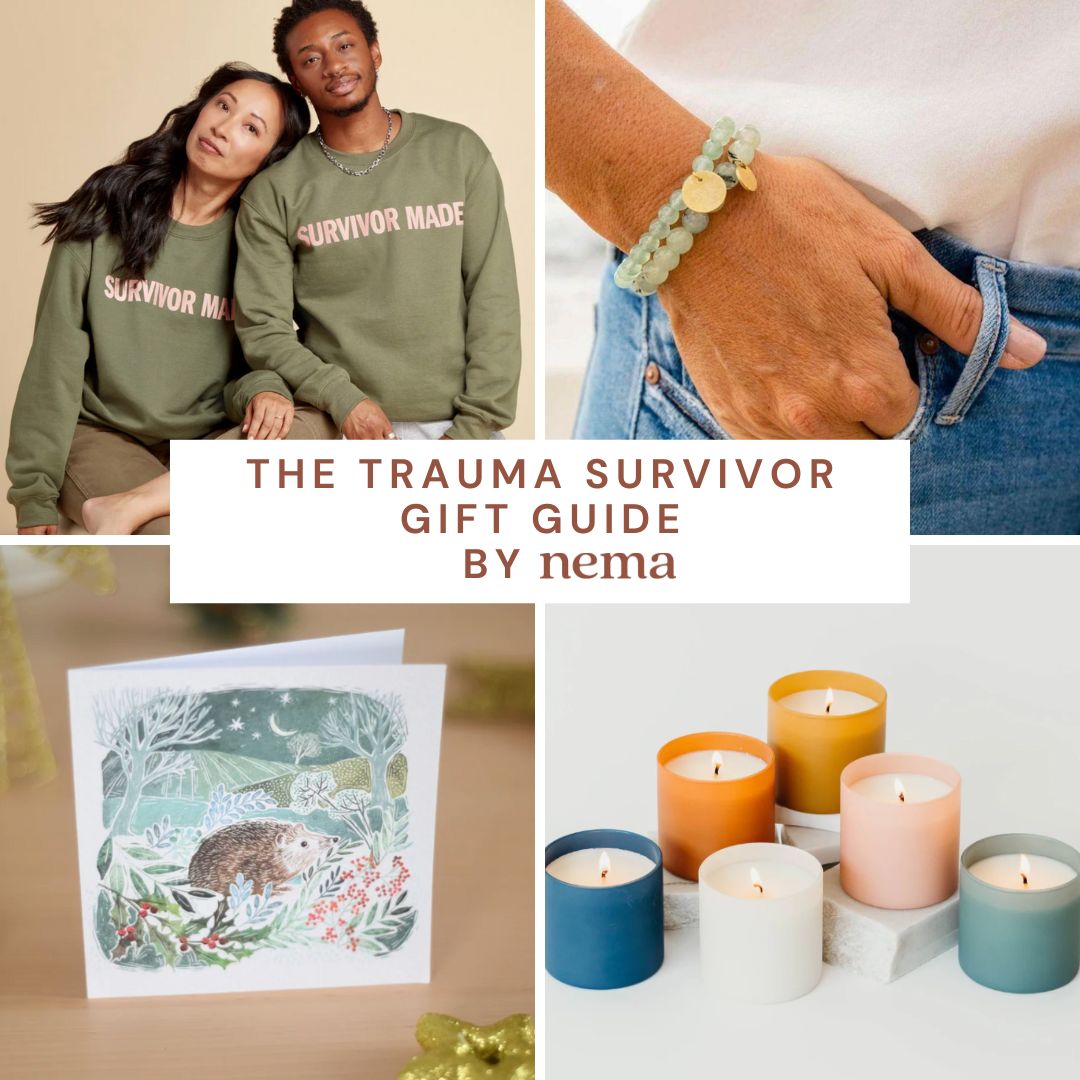Breaking the Cycle: What You Need to Know About Intergenerational Trauma
Trauma doesn’t end with the person who experienced it. Whether it stems from war, natural disaster, personal tragedy, or life circumstances, trauma can ripple through generations of families, shaping the way they feel, behave, and relate to one another long after the original events have passed.

Did you know that the reproductive egg that eventually became you was created in your grandmother’s body? That’s right - your mother was born with all of the reproductive eggs she’d ever have, which means that a part of you lived in your grandmother when she was pregnant with your mother. A part of you literally experienced the triumphs and stresses of generations before you.
This is why trauma doesn’t end with the person who experienced it. Whether it stems from war, natural disaster, personal tragedy, or life circumstances, trauma can ripple through generations of families, shaping the way they feel, behave, and relate to one another long after the original events have passed.
This is called intergenerational or historical trauma, and it affects millions of families across the world.
Certain populations are more prone to intergenerational trauma than others. Researchers have found that children and grandchildren of trauma survivors of abuse, oppression, and historical events such as the Holocaust can carry a higher risk for PTSD, anxiety, depression, and other mental health conditions.
Nema’s own CEO and co-founder, Dr. Sofia Noori, has overcome her own intergenerational trauma. Her parents survived the Vietnam War, and she has carried that trauma with her since early childhood. “It took me a long time to recognize this as a broader phenomenon, and not something that’s only specific to my family,” Dr. Noori shared. “Witnessing the traumas of my parents has definitely affected my outlook on life: it’s hard for me to adopt an abundance mindset, and I feel very sensitive to political instability.”
Fortunately, through awareness, understanding, and proper therapeutic support, it is possible to break generational patterns and heal – for Dr. Noori and for you. And when you address intergenerational trauma, it doesn’t just change one person’s life; it can transform an entire family.
How Trauma is Passed Between Generations
How does intergenerational trauma work exactly? This type of trauma refers to the psychological and emotional effects of traumatic experiences transmitted from one generation to another. Unlike direct trauma, it occurs when the impact of the original trauma runs so deep that it continues to influence family members, often through anxiety, depression, or other mental health challenges, who weren't present during the event itself.
Events that trigger intergenerational trauma are typically either large-scale, such as war, genocide, slavery, forced displacement, or systemic discrimination, or deeply personal experiences that fundamentally shift how people view safety, trust, and the world around them.
Interestingly, intergenerational trauma can be passed down genetically, behaviorally, or a combination of both:
- Biological pathways: Significant trauma can trigger epigenetic changes, which are alterations in how genes are expressed without changing the DNA sequence itself.
For example, if someone survives an intense, prolonged event, such as a genocide, their stress-response system may change cortisol levels and other hormones. These changes can make future generations more vulnerable to heightened stress responses and anxiety. They essentially inherit a biological predisposition to trauma responses they never directly experienced.
- Learned behaviors: Individuals who have survived trauma may develop specific coping strategies, attachment styles, or ways of relating that stem from their survival instincts, and they can pass these learned behaviors down to their children.
A parent who experienced domestic violence, for example, might struggle with trust or emotional intimacy, making it challenging for their children to feel safe. Children, then, may internalize feelings of hypervigilance and emotional distance and carry these response strategies forward with them even when they're not necessary.
In Dr. Noori’s case, she believes she has inherited a scarcity mindset from her mother. “I notice that my mom must keep things – she finds creative uses for things that other people think are rubbish, and keeps multiples of everything,” she said. “I think she does this because she’s lived with so little for so long, and is worried she might need something for the future. My mom literally lived on a boat in Hong Kong Harbor that sank, and ate orange peels for weeks. She is constantly worried that the other shoe may drop and she needs to be prepared for that.”
Both our bodies and behaviors can become carriers of ancestral wounds, creating patterns that persist until they're recognized and addressed.
Breaking the Cycle
How can we recognize intergenerational trauma? There are various emotional and behavioral indicators to watch for:
- Emotional indicators: This could look like someone who struggles with persistent anxiety with no clear source or depression that feels deeper than their personal circumstances warrant—or perhaps they're in a constant state of hypervigilance, always scanning for danger even in safe environments.
These responses start to make sense when viewed through the lens of inherited trauma, but they can feel isolating (for the person experiencing them) and confusing (for everyone) when the connection to intergenerational trauma isn't understood.
It’s also common for folks who have intergenerational trauma to feel guilty or ashamed because “others have had it worse,” but Dr. Noori has an answer for that. “I felt I couldn’t ‘claim’ certain parts of my identity because of the idea that other people ‘had it worse,’ but what hurts you, hurts you. Period,” she said. “You also indirectly experienced what your parents and grandparents experienced - that’s the foundation of your own traumatic experiences.”
- Behavioral indicators: This could be someone who consistently reacts with aggression or anger that's disproportionate to the situation or someone who avoids conflict or intimacy entirely to protect themselves from perceived threats.
Struggles with trust, difficulty forming secure attachments, and patterns of pushing people away are also common. These behaviors shape family dynamics, with individuals often adopting the same response and communication styles without realizing it.
Breaking the cycle requires intentional action and professional support. Specifically, working with clinicians trained in evidence-based trauma treatments can help people develop new ways of being in the world.
Treatment options like Eye Movement Desensitization and Reprocessing (EMDR), trauma-focused cognitive behavioral therapy, and somatic therapy (i.e., how emotions manifest in the body) can help individuals process their own experiences as well as inherited patterns they've absorbed. These therapies help individuals better understand their family's trauma history, rewire their emotional and physical responses to trauma, and create new narratives and coping strategies. They can also help families better understand and address their collective experiences.
Healing is Possible
Intentional action breaks the cycle of intergenerational trauma.
Understanding that this type of trauma is a valid experience and seeking help to heal that trauma is an act of self love—one that will create a healthier future for yourself, your family members, and future generations.
If you're experiencing trauma or PTSD symptoms and need support, consider making an appointment to speak with one of Nema’s clinicians.





